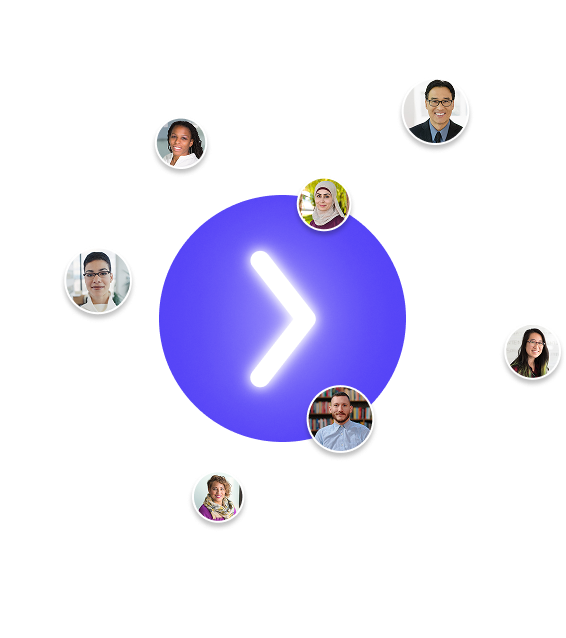
Subscribe to our Blog
We're committed to your privacy. SayOne uses the information you provide to us to contact you about our relevant content, products, and services. check out our privacy policy.

Real PradAugust 2, 20249 min read

Generating table of contents...
An API, or Application Programming Interface, is a set of rules and protocols that allows different software systems to communicate with each other. It acts as a connecting node between different applications, ensuring they can exchange data and perform tasks without hiccups.
APIs are the backbone of many modern applications, from social media platforms to e-commerce websites, and they make it possible for these systems to interact and share information in a structured and secure manner.
APIs facilitate integration and interoperability. It creates an ecosystem where your website, CRM, and marketing tools work together, sharing data and automating tasks without manual intervention. This is what APIs enable.
They help business operations and improve customer experience, by connecting different applications that make run the business effectively. For instance, an e-commerce platform can use an API to fetch product information from a supplier's database, ensuring that inventory levels are always up to date and reducing the likelihood of errors.
APIs, or Application Programming Interfaces, is software that enables different systems to communicate with each other. They come in various forms, each designed to serve specific purposes and offer unique characteristics. Understanding these different types is crucial for selecting the right API for your needs. APIs can be categorized based on their usage, functionality, and the protocols they follow.
REST APIs follow specific architectural constraints, such as client-server architecture, stateless communication, and a uniform interface. They interact with resources using HTTP verbs (GET, POST, PUT, DELETE). This architecture helps businesses by enabling scalability, flexibility, and ease of maintenance. For instance, REST APIs allow multiple front-end applications to use the same back-end service, making it easier to develop and maintain different interfaces for web, mobile, and desktop applications.

SOAP APIs use an XML-based messaging protocol for communication. They are often used in enterprise-level applications for their security and reliability features. SOAP's strong contract between the client and server ensures that the communication is standardized and secure, which is crucial for businesses that require high levels of data integrity and security, such as financial institutions and government agencies.
gRPC APIs are a high-performance RPC framework that uses protocol buffers as the interface definition language and message format. They are designed for high-performance and low-latency applications. Businesses benefit from gRPC by achieving faster data transfer and more efficient communication, which is particularly useful for real-time applications and microservices architecture.
Read more: Do microservices require API Gateways?
GraphQL APIs are a query language for APIs that allows clients to request exactly the data they need. They provide a more flexible and efficient alternative to REST APIs for fetching and manipulating data. Businesses can benefit from GraphQL by reducing the amount of data transferred, improving performance, and improving the user experience by providing more precise data retrieval capabilities.
WebSockets APIs provide a persistent, low-latency connection between a client and a server over the web. They are used for real-time communication and are particularly useful for applications that require continuous updates, such as live updates in web applications, gaming, and real-time analytics. Businesses can leverage WebSockets to create interactive and dynamic user experiences.
Non-Web APIs include operating system APIs like WinAPI for Windows and POSIX for Unix-like systems, as well as library APIs that allow applications to interact with libraries. These APIs help businesses by providing a standardized way to interact with operating systems and libraries, ensuring compatibility and efficiency across different platforms.
For example, operating system APIs enable developers to create applications that can integrate with the operating system's functionalities, while library APIs facilitate the reuse of code and reduce development time.
Different types of APIs cater to various needs and use cases. For instance, REST APIs are commonly used for web services due to their simplicity and flexibility. SOAP APIs are preferred in enterprise environments for their robust security features. GraphQL APIs are ideal for complex data structures, while gRPC is suited for high-performance applications. WebSockets are perfect for real-time communication, and non-web APIs are essential for interacting with hardware, GUIs, or databases.

Custom API development is not just about creating a bunch of endpoints; it's about crafting a solution that perfectly fits your business needs. You can optimize operations that require data from different applications, upgrade the security of your current application, and gain a competitive edge by tailoring the API to your specific requirements. So, why settle for a generic solution when you can have one that's custom-made to your needs?
If you're considering custom API development, the next step is to identify your specific needs and requirements. Start by evaluating your current systems and processes, then determine how a custom API can improve them. Don't be afraid to ask questions, seek advice from experts, or outsource your projects.
Building a custom API is a substantial decision, akin to choosing to build a house from scratch instead of buying one off the market. It's exciting but also a lot of work and can be pretty costly. So, when should you take the plunge?
You should consider building a custom API when you need a tailored solution that perfectly fits your unique business needs. While pre-existing solutions can be convenient, they often come with limitations that might hinder your growth or expose your data to unnecessary risks. A custom API provides the control you need to scale and secure your business effectively.
Building a custom API can be a game-changer if you're looking to integrate different services, improve security, or optimize your data flow. It allows you to create solutions that cater your specific needs, ensuring a more productive, faster application environment. So, let's look at the five steps to get started with your API build.
Step 1: Define Your Requirements
First things first, you need to know what you want your API to do. Identify the functionalities you need and the data you'll be working with. Keep things simple and focused.
Step 2: Choose Your Tools
Selecting the right tools is crucial. You'll need a backend language like Node.js, Python, or Ruby. MySQL, PostgreSQL, or MongoDB are popular choices for databases. Don't forget about frameworks like Express.js or Django to make your life easier.
Step 3: Design Your API
Plan your API endpoints and the data structures you'll use. If you're new to this, keep it RESTful. It's not rocket science, but it does require some thought.
Step 4: Start Coding
Now it's time to get your hands dirty. Write your backend code, set up your database, and create your API endpoints. Don't worry if it could be better at first; you can continually improve it later.
Step 5: Test and Deploy
Test your API thoroughly to ensure it works as expected. Once you're satisfied, deploy it to a cloud service like AWS or Google Cloud. Remember to set up proper security measures to protect your API.
If you're not feeling the DIY vibe, consider partnering with a top-notch API development company. SayOne can help you build a custom API that meets your business needs. We'll handle the heavy lifting so you can focus on what you do best.
If you need help figuring out where to start, don't worry. You can always begin by defining your requirements and choosing the right tools. If you still need to figure it out, partnering with a company like SayOne can provide the guidance and expertise you need.
SayOne can help you design and develop a custom API that fits your business needs. We'll handle everything from coding to deployment, ensuring your API is secure and efficient. With our expertise, you can focus on your core business while we handle the technical aspects. Contact us today!

We're committed to your privacy. SayOne uses the information you provide to us to contact you about our relevant content, products, and services. check out our privacy policy.

About Author
Co-founder and CEO at SayOne Technologies | Helping startups and enterprises to set up and scale technology teams- Python, Spring Boot, React, Angular & Mobile.

We collaborate with visionary leaders on projects that focus on quality